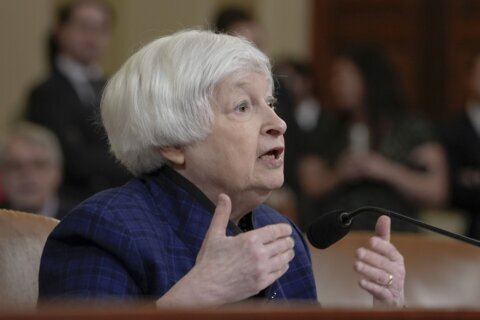New York (CNN) — Gas prices will fall in 2024 for the second year in a row, according to GasBuddy projections shared exclusively with CNN.
GasBuddy, which had a forecast for 2023 that proved to be eerily accurate, expects US gas prices will average $3.38 a gallon in the key election year of 2024.
That would represent a significant improvement from 2023’s average of $3.51 a gallon and an even bigger drop from 2022’s average of $3.95. Gas prices skyrocketed to record highs that year as Russia’s invasion of Ukraine set off global shockwaves.
Even though the Russia-Ukraine war lingers and there is a risk the Israel-Hamas war spills into a regional conflict, GasBuddy is betting drivers will get more relief in 2024. GasBuddy expects Americans will spend about $32 billion less on fuel than in 2023 and $79 billion less than in 2022.
“Next year should represent a continued march towards what most Americans would consider normal prices at the pump,” Patrick De Haan, GasBuddy’s head of petroleum analysis, told CNN in a phone interview.
The forecast bodes well for consumers, who remain highly sensitive to swings in the cost of living, especially at the gas pump. It also offers a reason for cautious optimism for a White House fighting an uphill battle trying to sell its economic message to a skeptical public.
Cheaper gas prices would give the Federal Reserve an even wider runway as it seeks to pull off a rare soft landing of the US economy by taming inflation without starting a recession. The price of gas is closely watched by the Fed but is not included in its “core” inflation gauge.
“Gas prices may still be a bit elevated but considering wage growth, it is taking less of Americans’ hard work to pay for that gallon of gasoline,” De Haan said.
GasBuddy doesn’t see gas prices averaging $4 a gallon in any single month next year. The monthly national average is expected to top out at $3.67 in May and drop down to $2.99 by December 2024.
Record-shattering US oil output
In the face of a difficult geopolitical landscape, GasBuddy is optimistic about the price outlook for 2024 for one big reason: America is an energy powerhouse.
The United States is on pace to pump more oil than any country on record, according to S&P Global Insights.
Blockbuster US oil production worries climate scientists and undermines the argument that President Joe Biden has waged a war on US energy. It also provides a cushion for consumers against a dangerous world that is seemingly just one headline away from spiking gas prices.
“The US producing record amounts of crude oil translates to lower risk,” De Haan said.
Oil prices briefly jumped earlier this month after BP stopped shipping oil through the Red Sea because of a series of attacks on vessels by Houthi militants from Yemen.
Although oil prices quickly calmed down, the damage was done for consumers. The national average price for regular gas has climbed to around $3.13 a gallon, according to AAA. That’s up from a recent low of $3.07.
In December 2022, GasBuddy projected gas prices would average $3.49 a gallon in 2023. That forecast was nearly spot-on, with actual gas prices averaging $3.51 a gallon so far this year.
What could go wrong
Of course, like any forecast, this call for lower gas prices in 2024 could prove wrong in either direction.
For example, a sudden slowdown for the US economy could sap demand and cause gas prices to tumble, but at the expense of job losses.
Alternatively, an escalation of the conflict in the Middle East could threaten energy supplies and spike oil back towards $100 a barrel, catapulting gasoline prices.
GasBuddy’s De Haan said one major issue that keeps him up at night is America’s limited refinery capacity.
Extreme weather events, including heat waves, have at times knocked aging refineries offline, limiting supply of gasoline. This has been an especially big problem on the West Coast, where it only takes one refinery to go down for prices to surge.
As always, another weather-related risk is the threat of a major hurricane that targets Gulf Coast refineries.
“You never know when you’ll get a (Hurricane) Katrina or Harvey that will do tremendous damage to low-lying Gulf Coast,” said De Haan.
Another big question mark is what OPEC+, the producer alliance led by Russia and Saudi Arabia, will do next.
The White House has had a rocky relationship with Saudi Arabia, and ties with Russia remain very frayed. OPEC+ hasn’t been shy about holding back supplies to juice oil prices, at the expense of consumers around the world.
“The decaying relationship between top oil producers and the US is a wildcard,” said De Haan.
The-CNN-Wire
™ & © 2023 Cable News Network, Inc., a Warner Bros. Discovery Company. All rights reserved.







